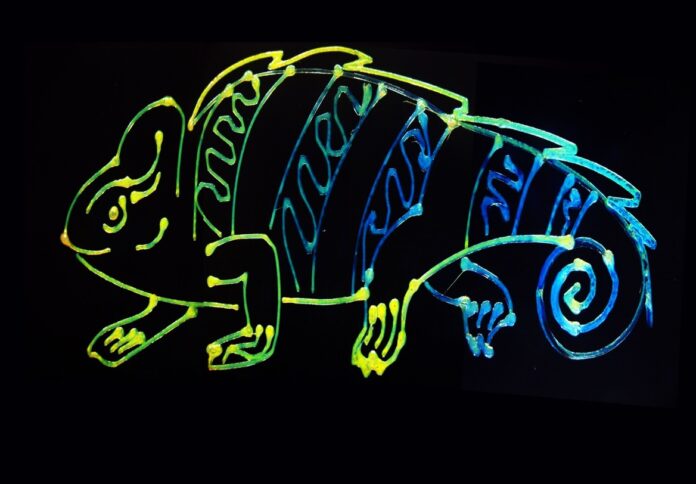
Researchers at the Beckman Institute have unveiled a technique capable of producing and altering structural colours across the visible wavelength spectrum, ranging from deep blue to vibrant orange.
The innovative UV-assisted direct-ink-write 3D printing method allows for dynamic colour changes during the printing process, offering a promising avenue for creating vivid and potentially more sustainable hues.
Inspired by the remarkable colour-changing abilities of chameleons, the team of researchers developed this sustainable approach to 3D print multiple dynamic colours from a single ink source.
“By designing new chemistries and printing processes, we can modulate structural colour on the fly to produce colour gradients not possible before,” remarked Ying Diao, associate professor of chemistry and chemical and biomolecular engineering at the University of Illinois Urbana-Champaign and a researcher at the Beckman Institute for Advanced Science and Technology.
Published in the journal PNAS, the study underscores the collaborative efforts of multidisciplinary experts in achieving this groundbreaking advancement.
Damien Guironnet, associate professor of chemical and biomolecular engineering, emphasised the power of collaboration in this initiative, highlighting the collective efforts that led to this remarkable achievement.
The UV-assisted direct-ink-write 3D printing method enables the alteration of structural colour during the printing process by leveraging light to control the evaporative assembly of specially designed crosslinking polymers.
“Unlike traditional colours which come from chemical pigments or dyes that absorb light, the structural colors abundant in many biological systems come from nano-textured surfaces that interfere with visible light. This makes them more vibrant and potentially more sustainable,” explained Sanghyun Jeon, the lead author and a graduate student in the Diao Lab.
The researchers demonstrated the ability to produce structural colours spanning the visible wavelength spectrum, ranging from deep blue to striking orange.
Rather than relying on an array of different paints, the research team utilises a single ink and adjusts the printing parameters to achieve the desired colour gradient.
Simon Rogers, associate professor of chemical and biomolecular engineering, emphasised the collaborative nature of the project, highlighting the collective learning and problem-solving that contributed to its success.
“Only by working together could we design this system at the molecular level to yield such fascinating properties,” echoed Charles Sing, associate professor of chemical and biomolecular engineering and materials science and engineering.



















